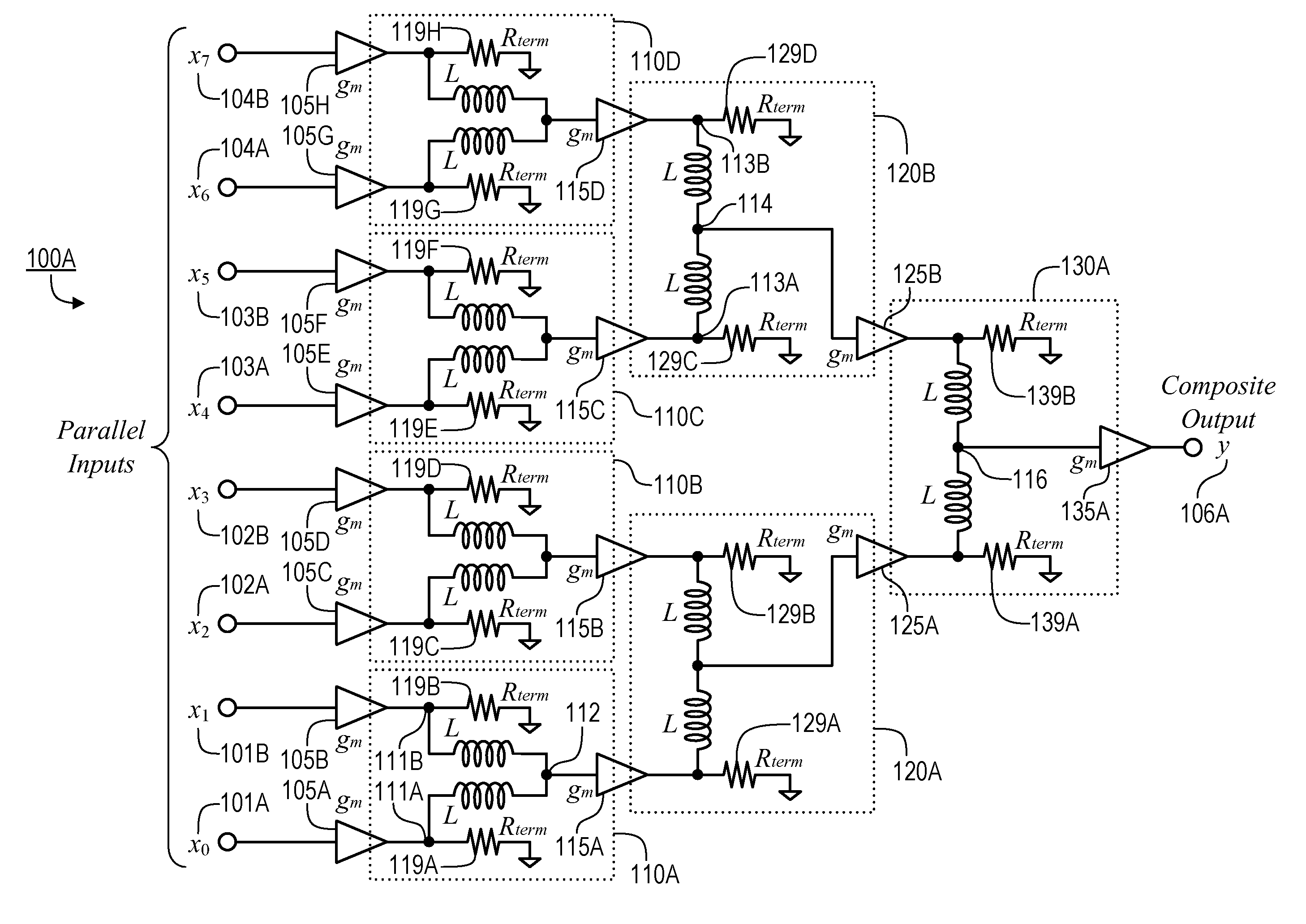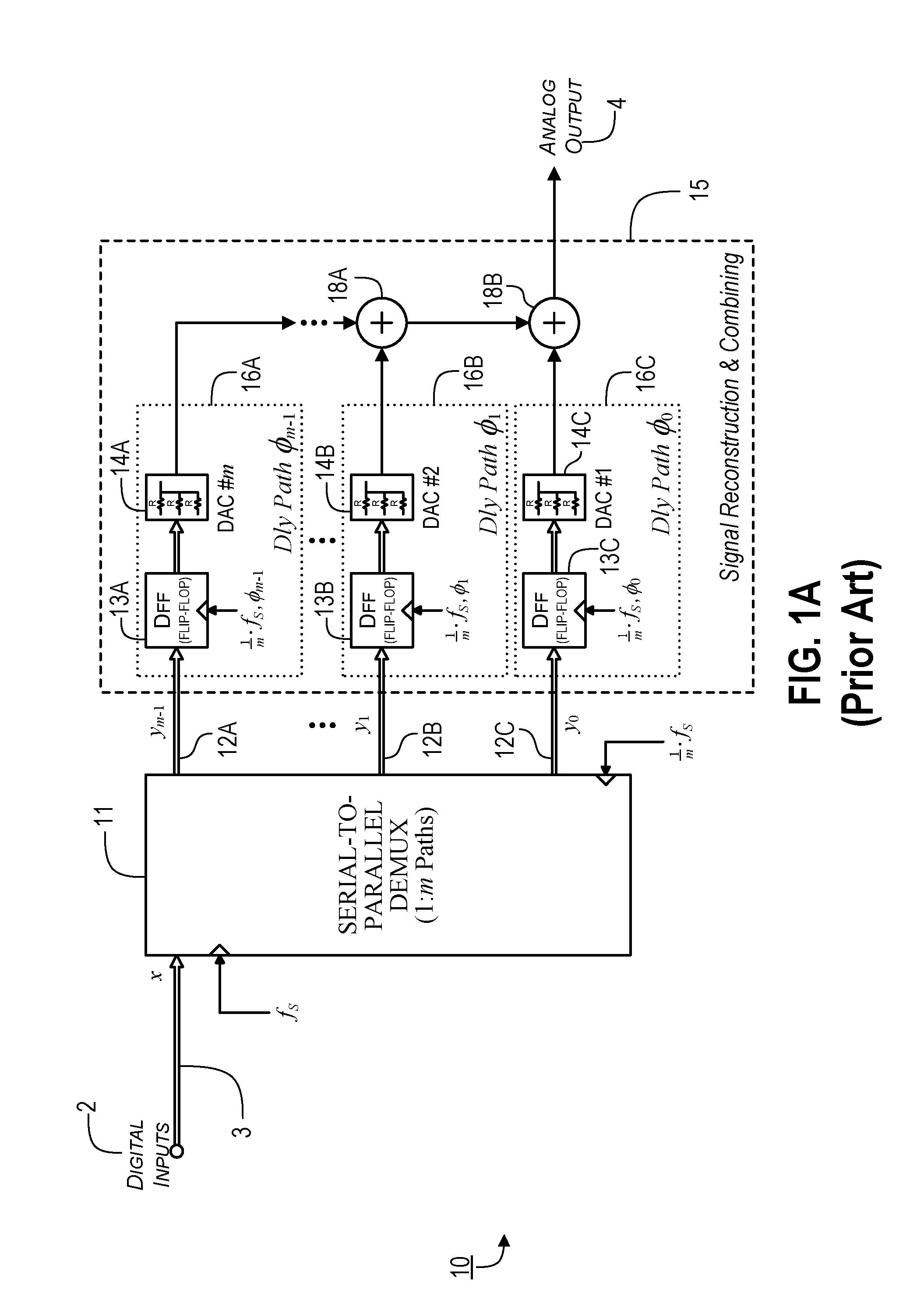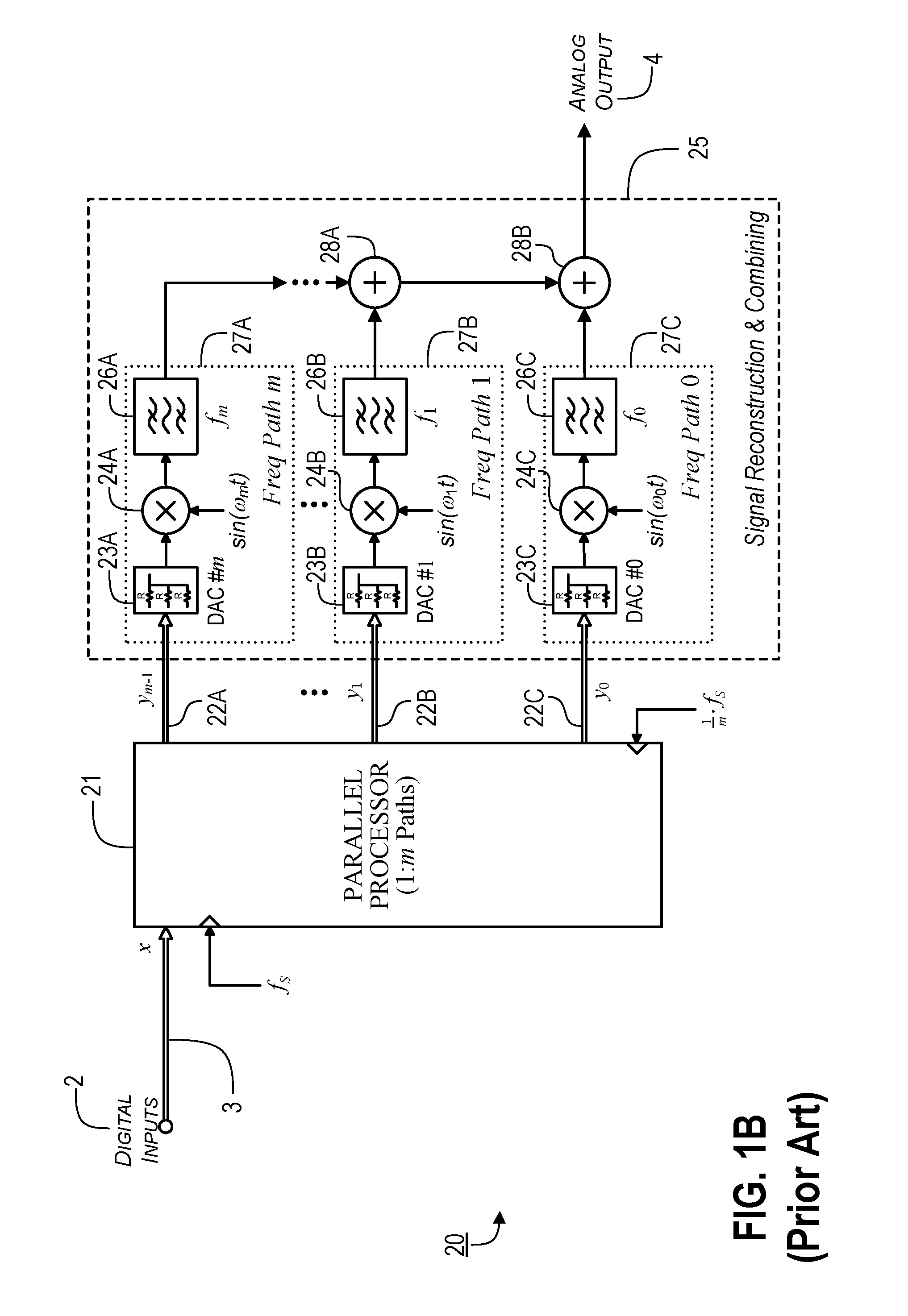Distributed Combiner for Parallel Discrete-to-Linear Converters
- Summary
- Abstract
- Description
- Claims
- Application Information
AI Technical Summary
Benefits of technology
Problems solved by technology
Method used
Image
Examples
Embodiment Construction
)
[0031]Conventional methods, such as parallel processing, have been developed that allow modern signal processors to operate at effective rates which exceed the limitations of constituent components. The present inventor has discovered that the effectiveness of the time interleaving, frequency interleaving, and / or noise shaping techniques, utilized by conventional digital-to-analog converters, depends on the availability of suitable methods for reconstructing an output signal from the multiple parallel inputs generated by a parallel processor. The present inventor further has discovered that distributed networks can be used to create novel structures for the summation of continuous-time signals and / or the amplification of bandpass signals. In particular, these novel structures often can overcome the performance limitations of conventional power combiners, including those limitations related to bandwidth, signal attenuation, and delay / phase variation.
[0032]A simplified block diagram ...
PUM
 Login to View More
Login to View More Abstract
Description
Claims
Application Information
 Login to View More
Login to View More - Generate Ideas
- Intellectual Property
- Life Sciences
- Materials
- Tech Scout
- Unparalleled Data Quality
- Higher Quality Content
- 60% Fewer Hallucinations
Browse by: Latest US Patents, China's latest patents, Technical Efficacy Thesaurus, Application Domain, Technology Topic, Popular Technical Reports.
© 2025 PatSnap. All rights reserved.Legal|Privacy policy|Modern Slavery Act Transparency Statement|Sitemap|About US| Contact US: help@patsnap.com



